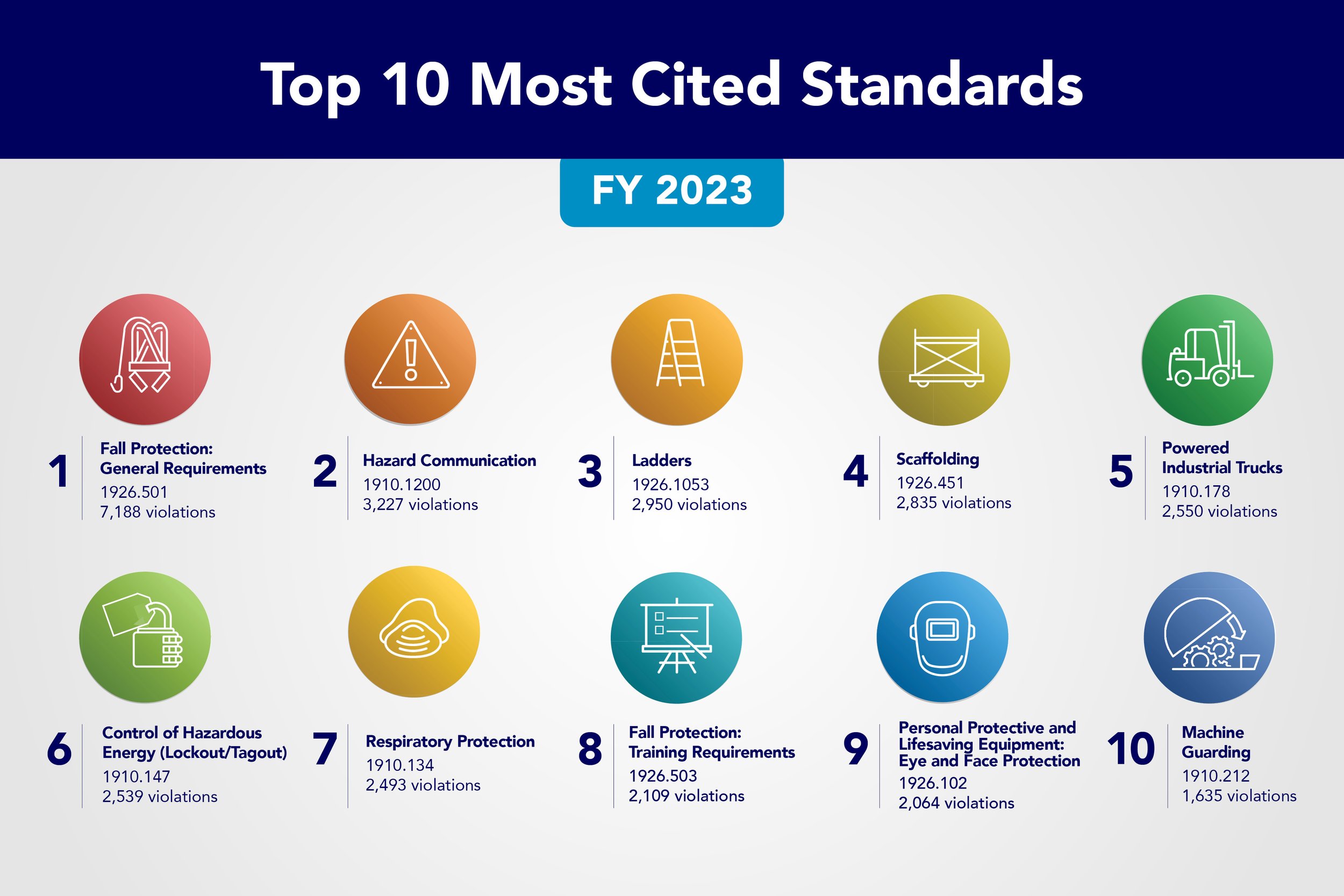Lockout/Tagout – Developing a Strong Program
When conducting safety inspections, ACS notices some common issues that most companies have to deal with. Periodically, we will focus our monthly Safety Alert to address some of these issues. This month’s Alert will focus on one of them – Lockout/Tagout which refers to safety practices and procedures that ensure equipment is properly shut down, isolated from all energy sources, and inoperable until maintenance or repair work is completed.
Year after year Lockout/Tagout has remained one of the top 10 most cited violations by OSHA (6th in 2023) https://www.osha.gov/top10citedstandards , so the odds are good you might encounter one. Violations are generally for failing to have a machine specific Lockout/Tagout procedure, not training authorized or affected employees, and for failing to conduct periodic inspections of Lockout/Tagout procedures (aka annual audit).
It is essential to build a comprehensive program to be proactive and compliant with the OSHA standard (29 CFR 1910.147). Keep in mind that even though your company might not do these activities internally, an outside contractor (i.e., electrician, plumber, etc.) would need to follow your site-specific requirements.
Here are some steps to follow to ensure a strong and effective program.
1. Develop Written Lockout/Tagout Program
The first step to lockout/tagout success is developing and documenting your Lockout/Tagout Program (also known as a Hazardous Energy Control Program). ACS provides a written Lockout/Tagout Program that establishes and explains the elements of your program based on OSHA requirements.
A written Lockout/Tagout Program is not a one-time fix; it is meant to be a living document, used as a source of information for answering lockout/tagout-related questions and to help ensure hazardous energy control procedures are in place. It should be reviewed on an annual basis to ensure it's still relevant and effectively protects employees. This review should be a collaborative effort from all levels of the organization.
2. Write Machine/Task Specific Lockout Tagout Procedures
Lockout/Tagout procedures should be formally documented and clearly identify the equipment covered. The procedures should detail the specific steps necessary for shutting down, isolating, locking, and securing equipment to control hazardous energy, as well as steps for the placement, removal, and transfer of lockout / tagout devices.
Going beyond compliance, we recommend creating best practice procedures that include machine-specific photos identifying energy isolation points. These should be posted at the point of use to provide employees with clear, visually intuitive instructions.
3. Identify and Mark Energy Isolation Points
Locate and identify all energy control points (i.e., valves, switches, breakers, plugs, etc. ) with permanently placed and standardized labels or tags. Keep in mind that these labels and tags should be consistent with the equipment-specific procedures from Step 2.
4. Provide Proper Lockout Tagout Devices
With so many products on the market designed to help keep your employees safe, selecting the most appropriate solution for your application is the key to lockout effectiveness. Lockout/tagout devices include items such as locks, tags, keys, switches, and covers that can be attached to the equipment or circuit. Once selected, it's important to document and use devices that best fit each lockout point.
5. Conduct Lockout/Tagout Training
Be sure to adequately train your employees, communicate processes and conduct periodic inspections to ensure your program is running effectively. Training should not only include OSHA requirements, but also your own specific program elements, such as your machine-specific procedures. ACS provides lockout/tagout training online, onsite, or via webinar.
When OSHA evaluates a company’s Lockout/Tagout compliance and performance, it looks for employee training in the following categories:
Authorized employees. Those who perform the lockout procedures on machinery and equipment for maintenance or repair.
Affected employees. Those who do not perform lockout requirements but use the machinery that is undergoing maintenance or repair.
Other employees. Any employee who does not use the machinery, but who is in the area where a piece of equipment is receiving maintenance or being repaired.
6. Perform and Document Lockout/Tagout Audits
Annual Lockout/Tagout audits are required by OSHA to ensure that energy control procedures are followed, and employees are familiar with their responsibilities. Any deficiencies observed during the periodic inspection must be corrected. Inadequacies in the energy control procedure could be the result of using a general procedure that does not effectively handle a specific application. They also may arise from changes made to equipment or processes without modifying the existing energy control procedure. The audit must be performed by an authorized employee who is not involved in the energy control procedure being audited. This individual is referred to as the "inspector," and he must be able to determine:
Whether the steps in the energy control procedure are being followed.
Whether the employees involved know their responsibilities under the procedure.
Whether the procedure provides the necessary protection, and what changes, if any, are needed.
Lastly, these must be documented and certify that the periodic Lockout/Tagout Audit has been performed. As the saying goes, unless it's in writing it never happened.
If you need assistance with your Lockout/Tagout Program, contact ACS today at clientservices@acs-safety.com.

